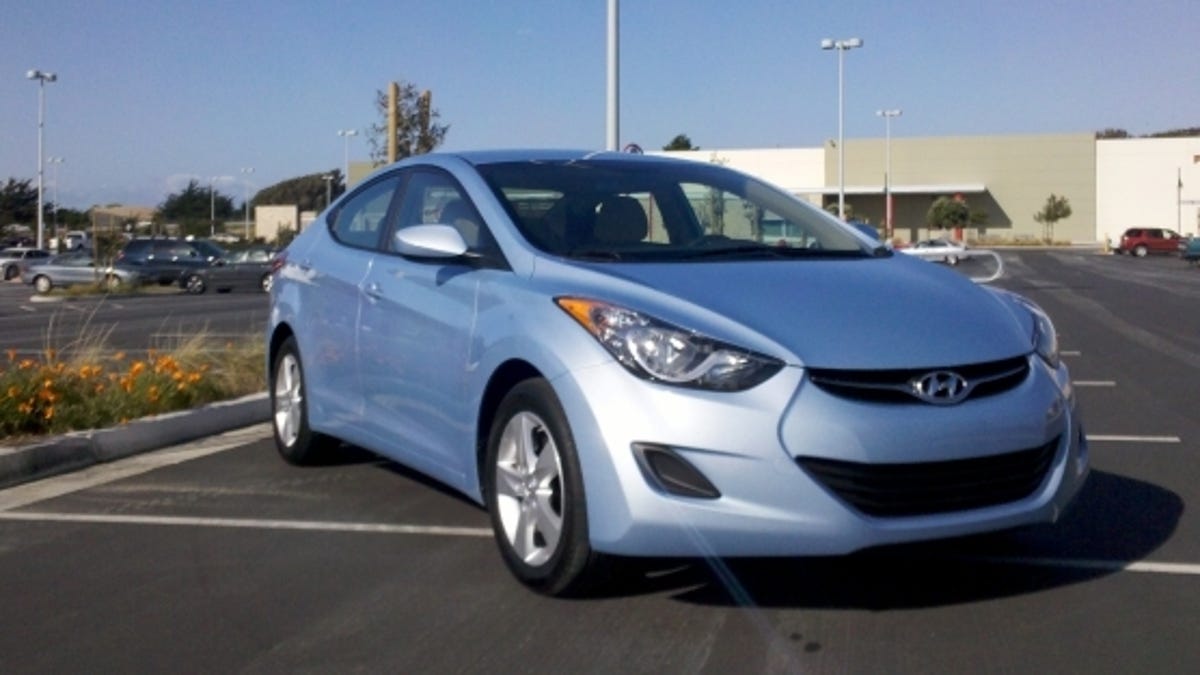Hyundai builds a better Civic: 2011 Elantra GLS
We were recently given an opportunity to drive Hyundai's all-new compact sedan and we're now convinced that Honda should definitely be afraid of the 2011 Elantra GLS.

For years, the Honda Civic has stood as the gold standard for small, fun-to-drive cars. Recently, however, C-segment competition has started to heat up, and Honda is facing some serious competition from the likes of Hyundai. Yes, Hyundai; don't laugh. We were recently given an opportunity to spend time behind the wheel of Hyundai's all-new compact sedan and we're now thoroughly convinced that Honda should definitely be afraid of the 2011 Elantra GLS.
Starting in the engine room, the Elantra is powered by a 1.8-liter four-cylinder engine that, at 148 horsepower and 131 pound-feet of torque, is 8 ponies stronger than the Civic with a ULEV CARB emissions rating. The Elantra is also available in certain markets with a cleaner PZEV rating that still comes in at 5 horsepower better than the Honda. Acceleration is merely OK, and power delivery is evenly distributed across the power band, but at this price point we don't really expect it to be a neck-snapper. Prospective owners more interested in performance at the pump will find the Civic coming up short compared to the Elantra's 29 city and 40 highway miles per gallon--fuel economy numbers achieved thanks in part to the Elantra's six-speed automatic transmission with Shiftronic manual-shift mode.
The Civic does still maintain an edge in handling. With its multilink rear suspension, the Honda feels more planted and more eager to change directions than the Hyundai and its torsion bar rear end. However, at less than nine tenths, the average driver probably wouldn't notice the difference in grip when the closest most get to a skidpad is hard acceleration through a highway cloverleaf. In about 90 percent of the situations that one would experience on public roads, the Elantra's handling could be described as quite good.
Cabin technology is where the Elantra GLS begins to seriously excel. (Random trivia: The 1985 Hyundai Excel was the company's first vehicle to be exported to the US market.) Our example was fully loaded with standard features such as iPod connectivity and optional features such as navigation and Bluetooth hands-free calling. Admittedly, these are all features that are available on the Civic, but the Honda's aging DVD-based infotainment system has seen better days.
At the center of the Elantra's cabin tech experience is a touch-screen, flash-memory-based navigation system that offers turn-by-turn directions with text-to-speech that spoke street names. Only 2D maps are available, but the graphics are crisp and easy to read, and the system features fast rendering and response.The XM satellite connection pumps XM traffic data onto the Elantra's 2D map and, additionally, provides data service for sport scores, weather forecasts, and a stock ticker, all accessible via the touch-sensitive menus. Of course, you can also listen to XM satellite radio as well. Other digital audio sources, including a single CD player, Bluetooth A2DP streaming, USB, and iPod connectivity, are pumped through an optional 360-watt premium audio system. Audio quality is good and balanced. Midrange sounds tend to get a bit harsh when the volume level is cranked, but the bass doesn't distort at moderate to loud volumes.
Once synced with a Bluetooth-enabled phone, the Hyundai's voice command system allows for the initiation of calls via voice command by simply saying the recipient's name--for example, "call David Ball at the office." Of course, Honda's system also features voice command for calls and navigation, but the system is so cumbersome to use that we hardly consider it to be an advantage.
The Elantra's cabin also features a nicely sculpted, soft-touch dashboard with a few hard plastics mixed in, but nowhere that your hand would naturally fall. A mix of tan fabric, dark surfaces, and faux-metallic finishes, our Elantra featured extremely good quality and fit and finish for a vehicle that starts at about $15k. The cabin is relatively quiet and the ride is smooth at highway speeds. However, we did notice that the doors made a hollow, cheap sound when slammed shut.
Our Elantra GLS started at $17,080. A $550 preferred package adds, among other things, Bluetooth calling, and a $1,750 navigation package adds, of course, navigation, premium audio, and a rear-view camera, the latter of which is not available on the Civic. Add an iPod cable ($35), floor mats ($95), and a destination charge ($720) to reach our as tested price of $20,230. If there's one issue that we have with the Elantra's pricing structure, it's that if you choose the six-speed manual transmission, you'll be locked out of selecting any of the cool tech options mentioned above. To be fair, it's the same situation over in Honda's camp.
Similarly specced, the Honda Civic EX sedan with navigation comes in at just over $3,000 more expensive. Even if these vehicles were equally matched, which they're not, the Hyundai is just a better deal. I'm sure that many won't agree, but I'm also of the opinion that the Elantra is much better looking, as well. Honda fans will point out that there's an updated Civic coming at the end of this year. However, until then, the Elantra is still my favorite of the two (discounting the mighty Civic Si, of course).
However, as much of a threat as Hyundai and its Elantra are to Honda's Civic, they're even more of a threat to the Toyota Corolla. Equipped with a less powerful and less efficient engine, a four-speed transmission, and way less cabin tech than the Hyundai, the Corolla just can't match the Elantra. Even without its navigation option, the Hyundai is a much better bargain than the Toyota when comparing the vehicles' initial quality. Be afraid, Toyota. Be very afraid.

